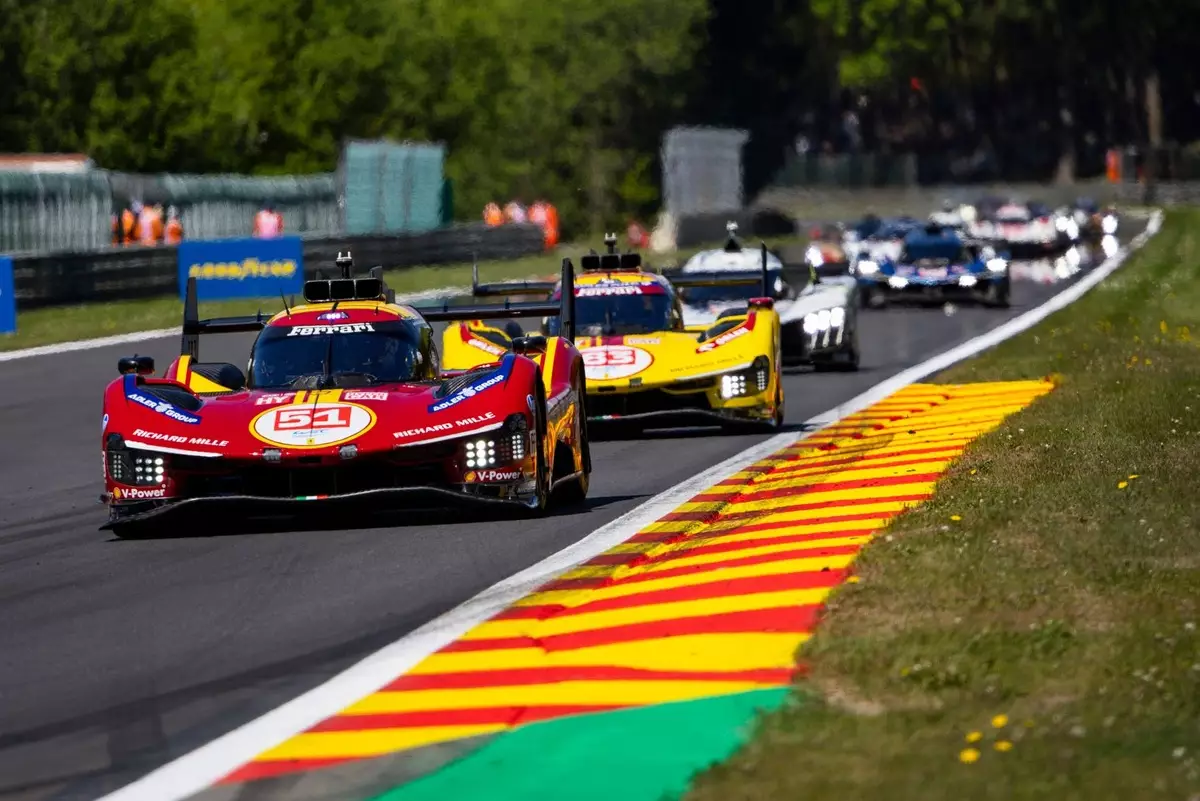Racing Triumph: Ferrari’s Daring Victory at the Spa 6 Hours
Every once in a while, a race comes along that not only captivates the fans but also sets a new standard in motorsport history. The Spa 6 Hours is one such event that never fails to deliver. As an endurance racing enthusiast, I find myself drawn to the drama and strategy that unfolds on the track. This year, Ferrari’s performance was nothing short of spectacular, and it pulled me right into the heart of the action.
The thrill of watching Ferrari clinch victory at Spa was exhilarating. With drivers James Calado, Antonio Giovinazzi, and Alessandro Pier Guidi at the helm of the powerful 499P Le Mans Hypercars, it was a race that kept everyone on the edge of their seats. Their daring win over their sister car by only four seconds was a testament to their skill and strategic prowess. It was a gripping saga of speed and precision that showcased why we love endurance racing so much.
Reflecting on this race, I couldn’t help but admire the blend of strategy and raw talent. Watching these teams navigate through each lap against fierce competitors like Alpine, BMW, and Peugeot was like witnessing a masterclass in racing tactics. Every twist and turn of the Spa-Francorchamps circuit holds potential for glory or disaster, making each moment intensely exciting. And this time, it was Ferrari who emerged from this battlefield victorious.
Key Takeaways
- Ferrari claimed victory with tactical brilliance and sheer speed.
- The Spa 6 Hours is renowned for its challenging conditions and strategic depth.
- Endurance racing requires not just speed but also effective resource management.
Qualifying: A Show of Force
Ferrari’s dominance was evident right from the qualifying rounds. They managed to sweep the Hyperpole session, securing the top three positions—an impressive feat that set high expectations for the race day. But in endurance racing, leading in qualifying is just one part of the equation. The real test lies in maintaining consistency and adapting to unforeseen challenges on race day. The Spa-Francorchamps circuit, notorious for its unpredictable weather and tricky turns, provided just such a challenge.
The circuit’s dynamic environment meant that teams had to be prepared for anything—from sudden rain showers to mechanical failures. Ferrari’s pole position was just a starting point; they needed to sustain their performance through every twist and turn. The ability to adapt under pressure is critical here, as it can make or break a team’s success over six grueling hours of racing.

Strategic Highs and Lows
The race itself unfolded like a high-speed chess match. After two safety car periods that added tension to the proceedings, Pier Guidi’s remarkable ability to erase a six-second deficit during a pit stop proved pivotal. This wasn’t just about driving skill; it was about smart decision-making and executing strategies under pressure. At one point, Ferrari opted for a dual strategy—one car pushed hard while the other conserved fuel—a move that turned out to be decisive in those final laps.
This divergence in approach highlighted a core principle of endurance racing: it’s not just about speed but about resource management and strategic execution amidst changing conditions. Pier Guidi’s emergence from his last pit stop with an impressive eleven-second lead over his teammate underscored how crucial timing and tactical decisions are in this high-stakes environment.
Challenges Along the Way
The path to victory wasn’t smooth for anyone involved. Alpine faced its own adversity with an unexpected slow puncture that dashed their hopes for a podium finish—a stark reminder of how fragile fortunes can be in racing. However, in true motorsport fashion, every challenge presents opportunities; Mick Schumacher took advantage of this moment to adjust his fueling strategy successfully.

Similarly, BMW experienced heartbreak with brake issues leading to their retirement from the race—a poignant example of how mechanical reliability is as crucial as speed. Peugeot had its share of drama too; their clash at Les Combes shattered their aspirations and demonstrated how quickly things can unravel under pressure at these high-octane events.
The Aftermath: Implications for Future Races
As Ferrari basked in their hard-won triumph at Spa, they fortified their reputation as giants in endurance racing while setting a formidable benchmark for others to aspire toward. This victory not only boosted team morale but also underscored their strategic depth and resilience—qualities that promise thrilling prospects for upcoming races.

The other teams weren’t far behind either; Toyota and Jota Cadillac showed they are formidable contenders ready to pounce on any opportunity presented by Ferrari’s challenges or missteps. Each race serves as a learning ground, pushing teams towards innovation and refined strategies as they prepare for future competitions.
Final Thoughts
Ferrari’s exhilarating win at the Spa 6 Hours will undoubtedly be dissected for its seamless blend of speed, strategy, and resilience against adversity. This triumph adds another exciting chapter to endurance racing’s ever-evolving storybook. As we look forward to more heart-pounding races this season, one thing is clear: every team is gearing up with renewed vigor for what promises to be an electrifying continuation of this motorsport saga.
endurance racing Ferrari victory Spa 6 Hours motorsport strategy racing challenges


Leave a Reply